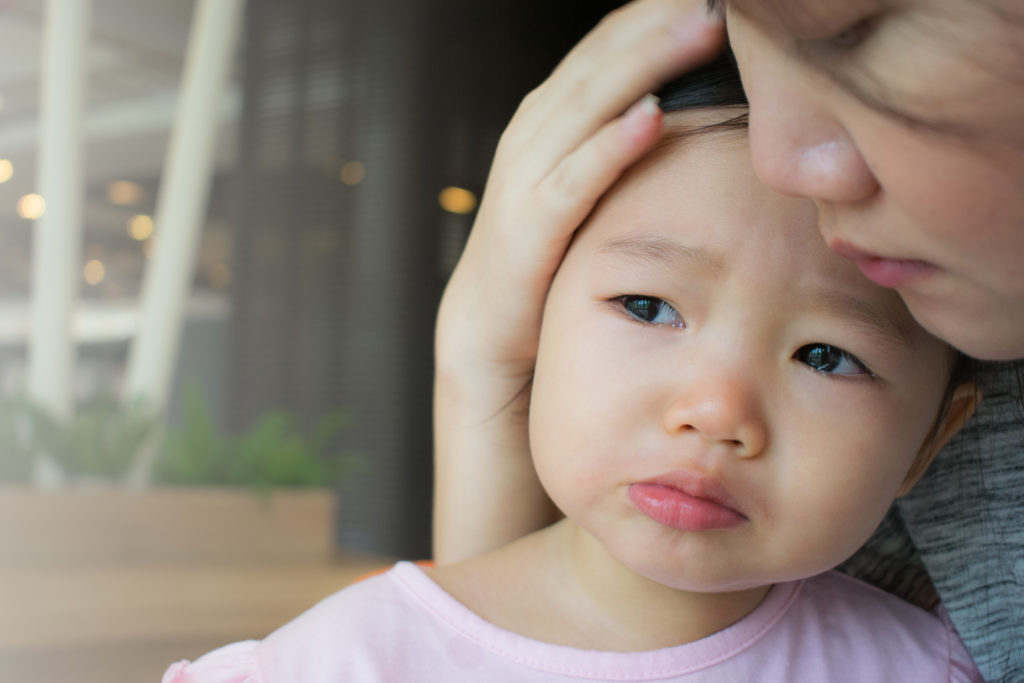Advice from pediatrician Mary Ellen Ulmer, M.D., at The Portland Clinic

RSV, or respiratory syncytial virus, is all over the news, but it’s nothing new. It’s one of many cold and flu viruses that are circulating now, as they do every year around this time.
So why are we hearing so much about it lately? It’s not because the virus is any different this year, but because this year, itself, is different. Normally, by the age of 2, just about every child has had RSV and built some immunity to it. During the pandemic, however, kids stayed home more and were exposed less. Now, many littles who were born right before or during the pandemic are back in daycare and getting exposed for the first time. And, as with other viruses, the first time with RSV is the worst.
RSV now accounts for more than half of the kids in local hospitals, according to the Oregon Health Authority. I don’t want to minimize how scary that is, but I do want to reassure you: for most kids, the likelihood of needing hospitalization is still very low.
Currently, almost all of the children in local hospitals with RSV are younger than 6 months old. It’s mainly the littlest babies with the tiniest airways – especially those born prematurely or with other underlying airway problems – who are at risk of symptoms severe enough for hospitalization.
For bigger kids, RSV is like any other bad cold, causing runny nose, cough, reduced appetite, and sometimes a fever. The one difference is that RSV can cause copious amounts of nasal discharge – aka snot. We’re talking buckets, especially in infants, whose little noses get plugged by all that stuff.
For bigger kids, RSV is like any other bad cold, causing runny nose, cough, reduced appetite, and sometimes a fever. The one difference is that RSV can cause copious amounts of nasal discharge – aka snot. We’re talking buckets, especially in infants, whose little noses get plugged by all that stuff.
Know what to do if your child develops symptoms
Like the common cold, there is no treatment for RSV. Similarly, we don’t test for it, because the test results wouldn’t change the care plan. Regardless of which virus a child has, the recommendations are the same:
- Rest.
- Drink plenty of fluids.
- For poor appetite, give smaller, more frequent feedings.
- For babies, saline and suction are recommended to keep the nose clear (sometimes suction alone isn’t enough). Use these especially before feeding and laying babies down to sleep.
- Consider a humidifier to loosen nasal secretions.
- Position children slightly upright in bed.
- Don’t use Tylenol or ibuprofen for coughing – only for fevers that are making kids uncomfortable. Albuterol and steroids also are unhelpful and discouraged.
- Keep sick kids home to avoid spreading the virus.
Most kids feel better within a week to 10 days. If symptoms last longer or get worse, call your pediatrician.
Know what to watch for
The main concern to watch for is breathing difficulty. Two signs that your child might be having trouble getting enough oxygen are:
- Rapid breathing. Count your child’s breaths for a full minute. Rapid breathing, for babies younger than 1 year old, is about 50-60 breaths per minute. For kids ages 3-5, it’s about 40-50. For older kids, it’s 30-40.
- Pulse oxygen below 92%. If you have a pulse oximeter at home, you can try using it on your child’s finger, palm or foot. Make sure the child’s skin completely covers the light sensor.
For infants, watch this video to see what other signs of distress look like. They may include:
- Flaring nostrils
- Tugging where the collarbones come together
- The belly going way in and out or pulling inward between the ribs
- Blue tint around the lips
Know when to call your pediatrician
As long as you see no signs of distress, you can safely care for your child at home. If you’re unsure, call your pediatrician’s office. We’re always available to talk through any concerns with you. After hours, an on-call pediatrician is always available, and we respond promptly. From 11 p.m. to 7 a.m., our phone is covered by the Pediatric Advice Line.
If you see clear signs of distress, call us right away; or, if it’s after office hours, seek care at an urgent care or emergency room.
Know how to prevent getting it or spreading it
RSV spreads through respiratory droplets. You can get it by breathing airborne droplets from someone who coughed or sneezed, or by touching a surface that those droplets landed on.
Prevention is all about the basics – most of us know the drill by now:
- Wash your hands – a lot.
- Don’t touch your nose, eyes or mouth with your hands.
- Avoid crowds and sick people, especially with your newborn.
- Consider masking again in public.
- Disinfect high-touch surfaces frequently.
- Stay home if you or your children are sick.
- Cover coughs and sneezes with a tissue or the crook of your elbow.
Despite your best preventive efforts, your children still might get RSV. Kids in daycare almost surely will. If they start to cough and sniffle, there’s no need to panic. Keep them home, watch for worsening symptoms, and call your pediatrician if you have any concerns. Once they get through this season, they’ll have better immunity, and next season will be a little easier.


